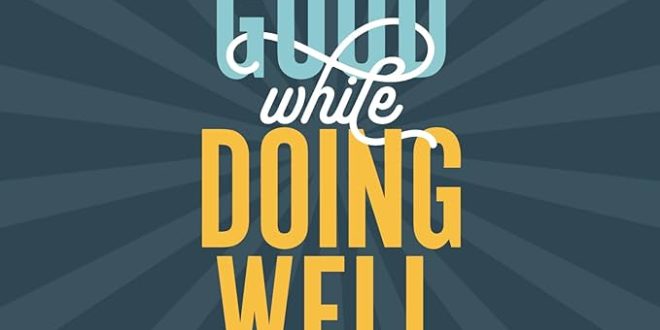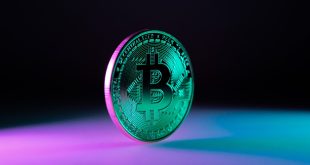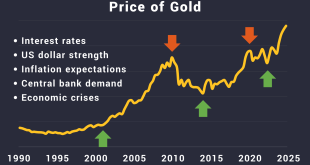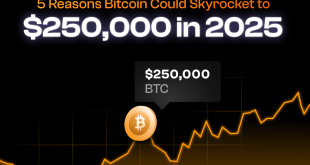Gold has always been that shiny, reliable friend in the investment world, hasn’t it? A safe-haven asset that whispers promises of long-term security. And for those patient investors out there, the ones who didn’t flinch during the dips and dives, the past few decades have been quite rewarding. But let’s be honest, after watching gold prices do the tango—a little stability here, a dramatic surge there—we’re all wondering: can this golden run keep going, or is a reality check on the horizon? Let’s dive into the factors that have been driving gold’s performance, peek at the current market trends, and try to figure out what the future might hold for those of us with a little gold in our portfolios.
Historical Performance: A Golden Track Record
The Early Years: Post-Bretton Woods Volatility
Remember the Bretton Woods system? Probably not, unless you’re a history buff. But its collapse in the early 1970s? That was a big deal for gold. It unleashed a wave of volatility. See, before that, the U.S. dollar was pegged to gold, and other currencies were pegged to the dollar. When that system fell apart, currencies started floating freely, and gold? Well, it went on a wild ride, as investors tried to figure out what was going on. It was a bit like watching a toddler learn to walk—fascinating, but unpredictable. Those early years set the stage for gold’s role as a hedge against currency fluctuations.
The Bull Run of the 2000s: Inflation and Geopolitical Uncertainty
Ah, the 2000s. Dot-com bubble bursts, 9/11, wars in Iraq and Afghanistan… Talk about a decade of uncertainty! And what does uncertainty breed? Demand for safe-haven assets, of course. Gold went on a major bull run. Inflation was creeping up, geopolitical tensions were through the roof, and investors were flocking to gold like moths to a flame. It was a classic case of “flight to safety.” You couldn’t open a newspaper without reading about some new crisis, and gold prices just kept climbing. Made you feel a bit smug if you had some tucked away, didn’t it?
The Post-Financial Crisis Era: A Period of Consolidation
Then came the 2008 financial crisis. Need I say more? Gold initially spiked, as everyone ran for cover. But then, something interesting happened. As governments around the world started pumping money into their economies through quantitative easing, and interest rates hit rock bottom, gold entered a period of consolidation. It didn’t crash, but it didn’t exactly soar either. It was more like a slow, steady climb, with a few bumps along the way. This era really highlighted the importance of patience for gold investors. You couldn’t expect overnight riches; it was more about playing the long game.
Current Market Drivers: What’s Fueling the Gold Rush?
Inflationary Pressures: The Classic Hedge
Inflation. It’s the word on everyone’s lips, isn’t it? And for good reason. With governments printing money like it’s going out of style and supply chains still tangled in knots, inflation is proving to be stickier than many economists predicted. And what’s the classic hedge against inflation? You guessed it: gold. Investors see gold as a store of value that can hold its own when the purchasing power of fiat currencies is eroding. So, as long as inflation remains a concern, gold will likely continue to find support.
Geopolitical Risks: Uncertainty Breeds Demand
Let’s face it, the world is a bit of a mess right now. From conflicts in Eastern Europe to rising tensions in Asia, geopolitical risks are lurking around every corner. And just like in the 2000s, uncertainty breeds demand for gold. Investors get nervous when they see headlines about wars, political instability, and trade disputes. They want a safe place to park their money, and gold often fits the bill. It’s a sad state of affairs, but geopolitical turmoil is often a boon for gold prices.
Central Bank Policies: Interest Rates and Quantitative Easing
Central banks play a huge role in the gold market, whether we like it or not. Their policies on interest rates and quantitative easing (QE) can have a significant impact on gold prices. Generally, low interest rates and QE are good for gold. Why? Because they tend to weaken currencies and make gold more attractive as an alternative investment. But when central banks start raising interest rates or tightening monetary policy, it can put downward pressure on gold. It’s a bit of a seesaw effect.
Emerging Market Demand: The Growing Appetite for Gold
Don’t forget about emerging markets! Countries like China and India have a huge appetite for gold, both for investment and for cultural reasons (think weddings and festivals). As these economies continue to grow, so does their demand for gold. This can provide a significant boost to gold prices, especially during periods of weakness in other markets. It’s a bit like having a secret weapon in the gold market.
Potential Risks and Challenges: Clouds on the Horizon?
Rising Interest Rates: A Headwind for Gold
Okay, so we’ve talked about all the good stuff. But what about the potential risks? Rising interest rates are definitely a headwind for gold. As interest rates go up, bonds and other fixed-income investments become more attractive, and gold loses some of its shine. Why hold gold, which doesn’t pay any interest, when you can get a decent return on a bond? It’s a fair question, and it’s something that gold investors need to keep in mind.
Stronger US Dollar: An Inverse Relationship
The U.S. dollar and gold tend to have an inverse relationship. When the dollar is strong, gold prices often struggle, and vice versa. This is because gold is priced in dollars, so a stronger dollar makes gold more expensive for investors in other countries. Keep an eye on the dollar index (DXY). If it starts heading north, it could be a sign of trouble for gold.
Technological Disruption: Alternative Investments
Let’s not forget about the rise of cryptocurrencies and other alternative investments. These new assets are competing with gold for investors’ attention and capital. Some people see Bitcoin as the new “digital gold,” and they’re pouring money into it instead of traditional gold. Whether this trend will continue in the long run is anyone’s guess, but it’s definitely something that gold investors need to be aware of. The world is changing, and gold needs to adapt to stay relevant.
Economic Recovery: Diminishing Safe-Haven Appeal
Finally, a strong and sustained economic recovery could diminish gold’s safe-haven appeal. If the global economy starts humming along nicely, and investors become more confident, they may be less inclined to hold gold. They might prefer to invest in riskier assets, like stocks, that offer the potential for higher returns. So, ironically, good news for the economy could be bad news for gold. Go figure!
Strategies for Gold Patient Investors: Navigating the Future
Diversification is Key: A Balanced Portfolio Approach
Alright, so how do you navigate this complex landscape? First and foremost, diversification is key. Don’t put all your eggs in one golden basket. A well-balanced portfolio should include a mix of assets, such as stocks, bonds, real estate, and, yes, gold. The right mix will depend on your individual circumstances and risk tolerance.
Long-Term Perspective: Riding Out the Volatility
Remember, gold is generally a long-term investment. Don’t expect to get rich quick. There will be periods of volatility, ups and downs. But if you have a long-term perspective and you’re willing to ride out the bumps, you’re more likely to be rewarded in the end. It’s all about having the patience of a gold miner!
Physical Gold vs. Gold ETFs: Choosing the Right Vehicle
You have a choice: physical gold (bars, coins) or gold ETFs (exchange-traded funds). Physical gold gives you the satisfaction of holding the real thing, but it comes with storage and insurance costs. Gold ETFs are more convenient and liquid, but you don’t actually own any gold. Which one is right for you? It depends on your preferences and circumstances. Some people like the security of having physical gold stashed away, while others prefer the ease and flexibility of ETFs.
Dollar-Cost Averaging: Mitigating Risk
Dollar-cost averaging is a strategy where you invest a fixed amount of money in gold at regular intervals, regardless of the price. This can help you mitigate risk, because you’ll be buying more gold when prices are low and less gold when prices are high. It’s a simple but effective way to smooth out the volatility and potentially improve your returns over time.
The Future of Gold: Predictions and Projections
Scenario 1: Continued Inflation and Geopolitical Instability
In this scenario, inflation remains stubbornly high, and geopolitical tensions continue to simmer. Investors flock to gold as a safe haven, driving prices higher. Gold benefits from its traditional role as a store of value and a hedge against uncertainty. This is the “golden” scenario for gold investors, if you will.
Scenario 2: Economic Recovery and Stable Interest Rates
In this scenario, the global economy recovers strongly, and central banks manage to keep inflation under control without raising interest rates too aggressively. Gold’s safe-haven appeal diminishes, and prices stabilize or even decline slightly. Gold becomes less of a “must-have” asset and more of a “nice-to-have.”
Scenario 3: A Black Swan Event: Unforeseen Disruptions
Ah, the dreaded black swan. This is the scenario where something completely unexpected happens, like a major financial crisis, a global pandemic, or a large-scale war. In this scenario, all bets are off. Gold could either skyrocket, as investors panic and seek safety, or it could crash, as everyone sells everything to raise cash. It’s impossible to predict what would happen, but it’s important to be prepared for the unexpected.
So, what’s the takeaway from all of this? Well, investing in gold requires patience, a long-term perspective, and a good understanding of the factors that drive its price. There are risks and challenges, but also opportunities. Whether it’s still a good time to get involved and the golden run can continue, or whether a correction is looming, that’s really up to your personal view. Hopefully, now, you’ve got a clearer view.
 seeme
seeme



